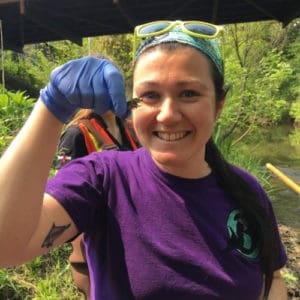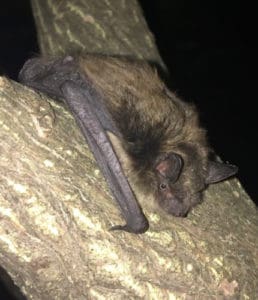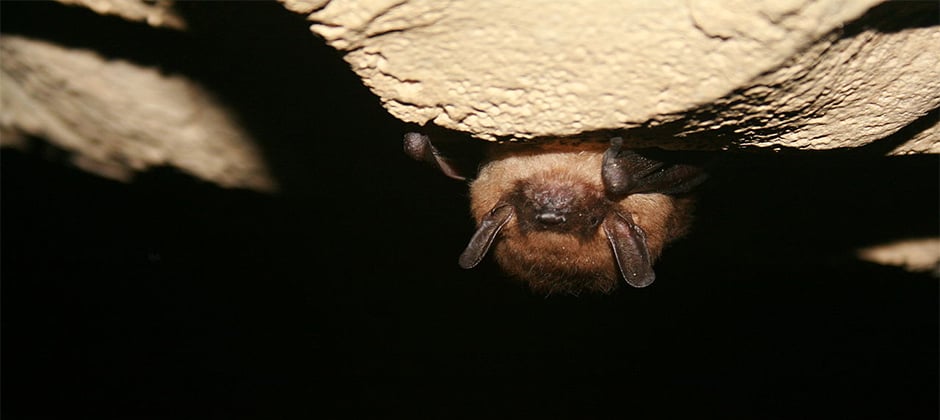Share this article
As white-nose kills some bats, others expand their diets
Big brown bats may be taking over the ecological food niche of little brown bats due to the latter’s greater susceptibility to a deadly fungal pathogen.
“We’ve gone from a niche separation to an overlap,” said Chloe Robinson, a postdoctoral fellow in biology at the University of Guelph and one of the co-authors of a study published recently in Ecosphere.

Chloe Robinson was one of the co-authors of research on brown bats. ©Carley Maitland
Little brown bats (Myotis lucifugus) are particularly susceptible to white-nose syndrome, a fungal disease that’s laying waste to bat populations of a number of species across North America as it continues to spread westward. The fungal disease often kills bats indirectly by decreasing their ability to regulate their body temperature during hibernation. This can force them out of hibernation early when there isn’t enough food to survive.
“Basically, they starve to death and can’t recover from this impact,” said Mehrdad Hajibabaei, an associate professor of biology at the University of Guelph and one of the co-authors of the study.

Little brown bats, like the one pictured here, are more susceptible to white-nose syndrome than big brown bats. Courtesy of University of Guelph
But big brown bats (Eptesicus fuscus) are relatively unaffected by the disease, possibly due to their larger body mass and fat reserves.
Researchers wanted to see whether the drop in little brown bat populations indirectly affected big brown bats. The team monitored the calls of both species using ultrasonic transmitters at sites in southern Ontario before and after the white-nose pathogen had swept through the area to see if populations changed. They noticed that the activity of little brown bats decreased while the big brown bats had increased activity over the same period.
They then determined what types of prey each species fed on during this period by analyzing their feces as well as stomach contents, looking for insect DNA. They used a large reference DNA database at the university’s Center for Biodiversity Genomics to determine exactly what type of prey each species fed on.
“It really goes into the fine scale of the diet of the species,” Hajibabaei said.
Before WNS arrived in the area, the team found that the two species ate different types of insects.
But after white-nose syndrome began infecting bats in the area, they noticed a significant change. While the type of food the little brown bats that survived ate didn’t change after the epidemic, big brown bats expanded their diets to consume more of the types of food that used to be solely favored by little brown bats.
“[The study] gives evidence that there is some degree of competition between the two species, and the little brown bat’s decline relaxes the competition,” Robinson said.
She said this could be an issue as the expansion of the big brown bats’ diets could present an additional obstacle for the little brown bats’ recovery.
Header Image: Big brown bats eat more diverse food types when little brown bats decline. ©Ann Froschauer/USFWS








